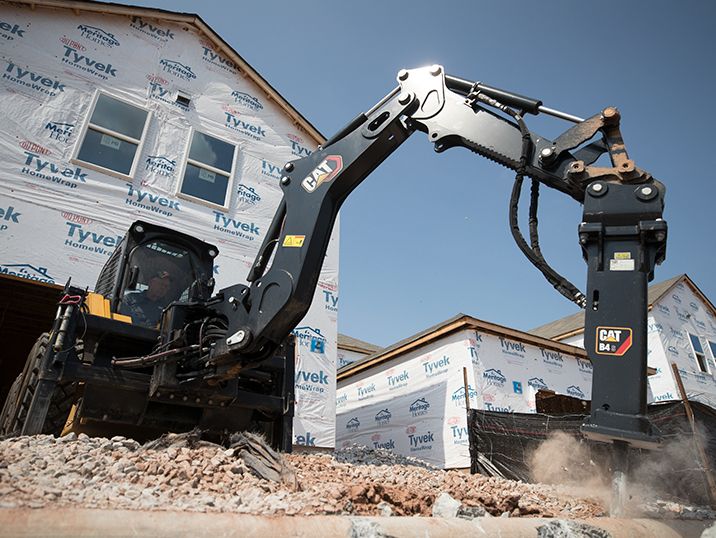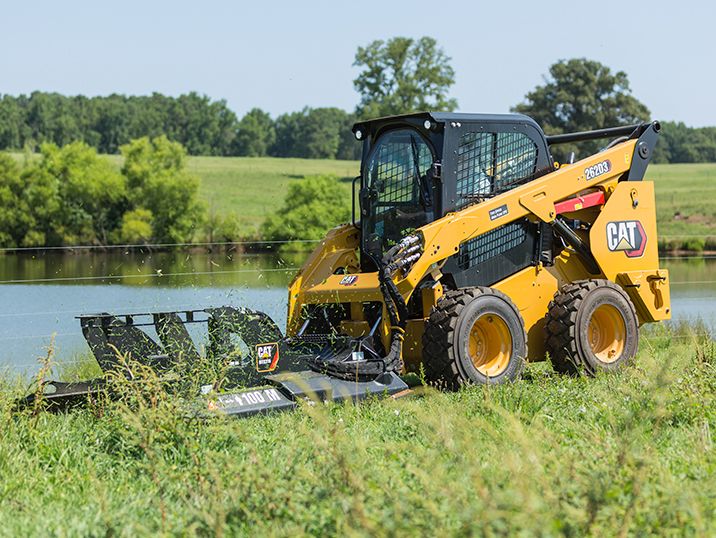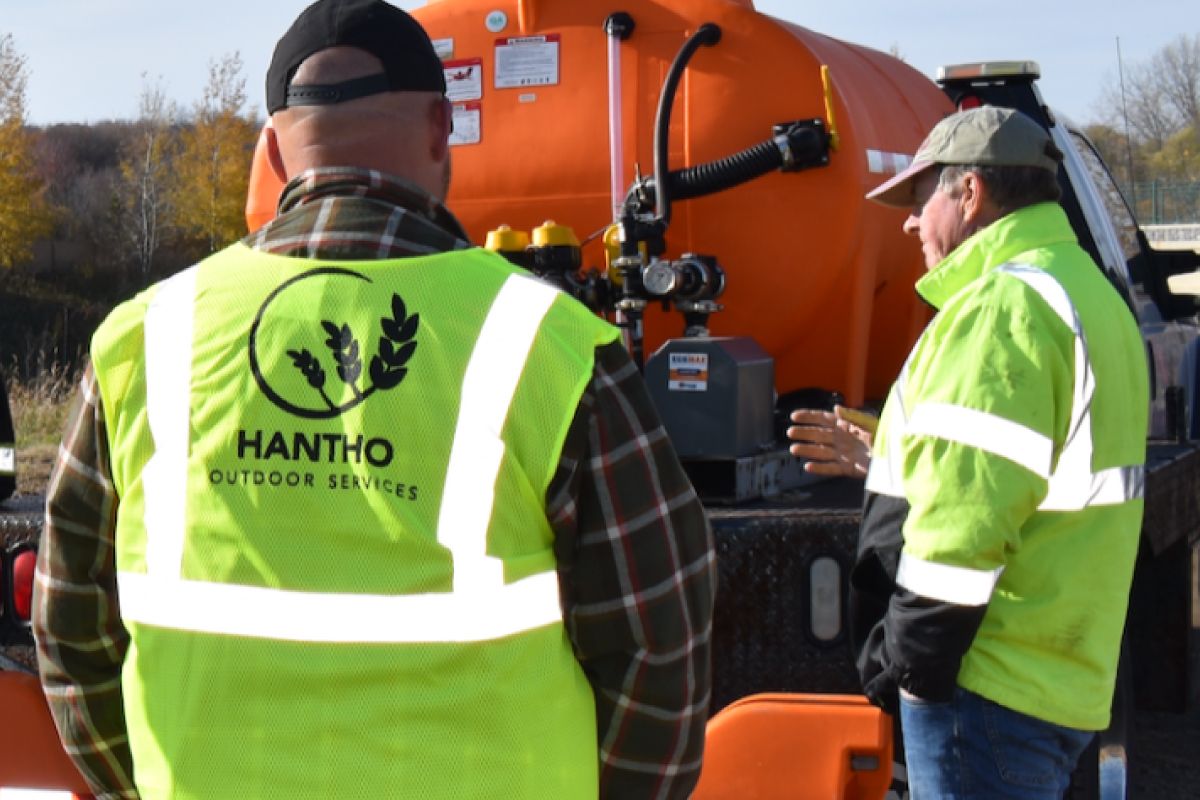

Sign In
Welcome! Sign In to personalize your Cat.com experience
If you already have an existing account with another Cat App, you can use the same account to sign in here
Register Now
One Account. All of Cat.
Your Caterpillar account is the single account you use to log in to select services and applications we offer. Shop for parts and machines online, manage your fleet, go mobile, and more.
Account Information
Site Settings
Security
Rebuilding for Resilience
With the increasing occurence of natural disasters around the world, rebuilding for resilience is an essential conversation within the construction community. It's time to reform our disaster response plans, and it begins with how we approach construction at its core.
It’s no secret that there’s been an exponential increase in natural disasters in the US, let alone the world. Every community has the potential to be affected by some sort of severe weather conditions and/or natural disaster - tornadoes, hurricanes, flooding, storm surge, wildfires, etc. The number of people at risk is only increasing with climate change, with billion-dollar disasters trending upward both in frequency and in cost.

At CONEXPO-CON/AGG 2020, we sat in on one of the education sessions focused on resilience – why it’s important, how the construction industry plays a large role in mitigating disasters, and how concrete can be used to save lives as well as recovery time and cost.
Why Are Disasters Costing Us More?
Tien Peng, the Sr. VP of Sustainability, Codes and Standards of the National Ready Mixed Concrete Association, explained that the way our populations are migrating within the US is making us susceptible to natural disasters – we’re putting ourselves more at risk than ever by flocking to the foothills in the West and nearer the water in the South. We’re also concentrating our wealth in urban areas. These changes are significant contributors to the increased human and property loss during and after natural disasters.
“The reality is, there are actually not any natural disaster,” says Peng, “If you and I were not around, it would just be called nature. We’re unprepared and have failed to adapt to our new living environment.”
It’s time to reform our disaster response models, and that begins with building for resilience.
What is Resilience?
The Urban Land Institute (ULI) defines resilience as the ability to prepare and plan for, absorb, recover from, and more successfully adapt to adverse events. Changes in the environment (whether man-made or natural) are addressed through mitigation. This can involve economic development, environmental sustainability, and social wellbeing – all are integral parts of resilience planning to minimize the negative effects of natural disasters.
Sustainability initiatives have focused a lot on carbon terms and green practices, but that’s not the whole story. Green buildings continue to be a focus for sustainable design, but they’re not the solution for mitigating or recovering from natural disasters – resilience is something different entirely. As Kevin Reis, Executive Director of US Resiliency Council, explains, “Green buildings are designed to have a low impact on the environment, but not for the environment to have a low impact on them.”
The great news is that mitigation actually pays for itself. The National Institute of Building Sciences (NIBS) conducted a study in 2017 to show the value of building design and construction specifically to mitigate against hazards like flooding, hurricane surge, wind, earthquakes, and wildfires in order to reduce losses. For every dollar you spend on mitigation measures, there are savings ranging from $4-$7 depending on the hazard.
How Can We Build for Resilience?
Adopting practices in construction to mitigate the risk of natural disasters means that we need to start building above code – going above and beyond to insure that if, or when, a disaster strikes, your client will be faced with a smaller window of recovery time and therefore a smaller window of lost functionality. One way to hold your business to a higher standard is to consider the US Resiliency Council (USRC) Rating System.
The US Resiliency Council (USRC) was started in 2011. Their vision was centered around the idea that if we really wanted to create resilient communities, we needed to be more aware that buildings are at the heart of our communities. Today, the USRC has over 90 member organizations ranging from engineering, architects, industry suppliers, builders, etc. They employ a building rating system from 1 star to 5 stars based on safety, potential damage, and estimated recovery time.
Resilience plans are often 20-30 year initiatives to help make cities more resilient. They are ways to prepare for the next disaster so that the infrastructure is better suited to not only handle it, but also to recover. This deals with everything from what kinds of buildings they will build, to what codes are put in place, to what materials they’re going to use. And one material that comes up as a gold standard is concrete.
Why use concrete?
- Concrete structures are most resilient.
- Concrete has a unique, multi-hazard resilience.
- Concrete has social and economic benefits for building design.
One thing that Kevin wants all contractors to know is that building for resilience isn’t like buying a luxury car – it can be made affordable for anyone. In one case study he shared about a 9-story affordable housing project, the additional resilience cost was only 0.24% of the total project cost and ended in a 4 star rating with a building that will keep vulnerable populations safe in the event of a natural disaster. If that doesn’t speak volumes, here are some other reasons to consider building for resiliency:
- In some areas, you can earn extra points in RFPs for including designs for USRC ratings.
- Builders who propose and use resilient measures and achieve resiliency ratings have increased opportunities to win more projects.
- Every new structure that uses concrete structures and resiliency measures helps to increase the resiliency of your community.
- Smart, resilient design using concrete instead of wood in urban settings can result in more rental area due to more rentable space.
- You can be a part of preserving historic structures while also increasing their safety and resiliency by using concrete retrofits on the interiors.
- More resilient buildings mean less insurance risk, which also means lower loan rates.
As Kevin summed it up in the Pathways to Resilience educational session at CONEXPO-CON/AGG, we all want a greener environment and to have a lower environmental impact. If we truly want our communities to be sustainable, we have to add resilience into the conversation.
RELATED ARTICLES
You’re here to get ideas to grow your business. Read on for machine insights and expert tips and tricks to get more out of every job.
-
Your Guide to Landscape Construction
Find out more about landscape construction and how you can add it to your business offerings.
Learn More -
Landscape Equipment Rentals vs. Ownership
You know what machine you want, but how do you get it? We discuss when to consider landscape equipment rentals, leasing, and ownership.
Learn More -
Landscaper Job Site Safety Tips
Take advantage of these landscaper job site safety tips to prevent heat illness as you head into the busy summer months.
Learn More -
Landscaping Stormwater Management
Learn why landscaping stormwater management is important and best practices to follow to get the work done right.
Learn More






